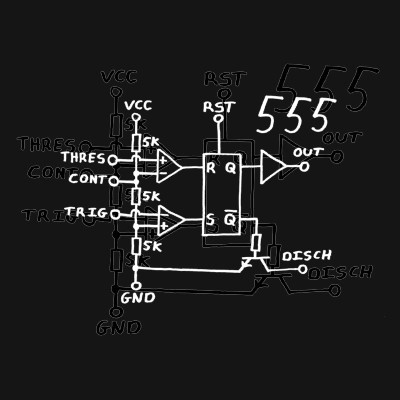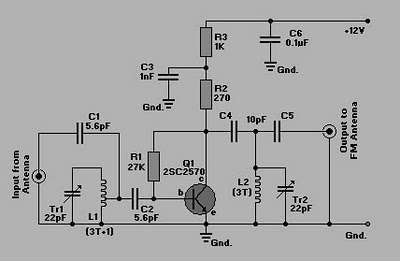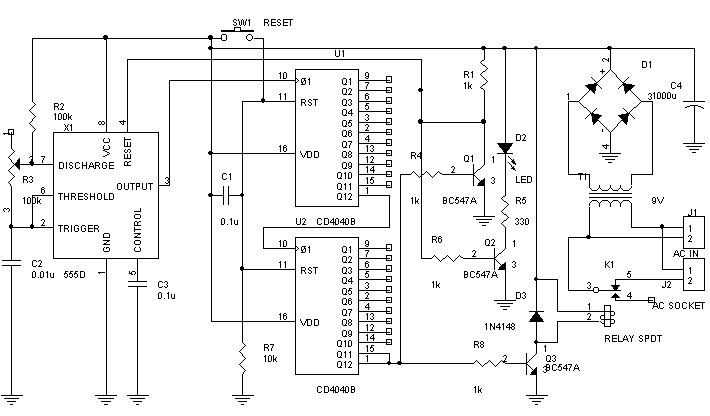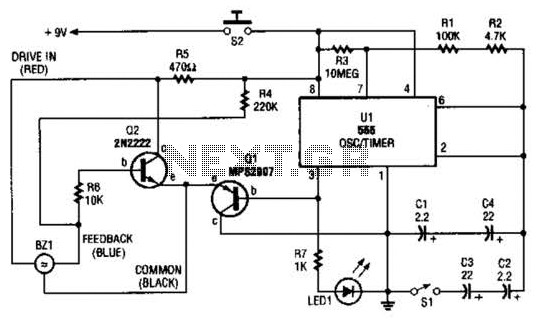
clic 555 timer chip schematic

Classic 555 timer chip schematic circuit t-shirt by EEVblog picture on VisualizeUs - bookmark pictures and videos that inspire you. Social bookmarking of pictures and videos. Find your pictures and videos.
The 555 timer IC is a versatile and widely used component in electronic circuits, known for its ability to function in various modes such as astable, monostable, and bistable configurations. The classic schematic representation of a 555 timer circuit typically includes the IC itself, along with essential passive components like resistors, capacitors, and sometimes diodes, depending on the intended application.
In the astable mode, the 555 timer operates as an oscillator, generating a continuous square wave output. This configuration involves connecting two resistors (R1 and R2) and a capacitor (C1) to the appropriate pins of the IC. The output frequency can be calculated using the formula:
\[
f = \frac{1.44}{(R1 + 2R2) \cdot C1}
\]
In monostable mode, the 555 timer is triggered by a short pulse on the trigger pin, producing a single output pulse of a defined duration. The time period of this pulse is determined by the resistor (R) and capacitor (C) connected to the discharge and threshold pins, calculated using:
\[
T = 1.1 \cdot R \cdot C
\]
In bistable mode, the 555 timer acts as a flip-flop, providing two stable states. This configuration typically requires two trigger inputs and can be used in applications such as toggling switches or memory storage.
The schematic for the 555 timer circuit includes clear labeling of power supply connections, ground, and output, ensuring ease of understanding and implementation. The design is often accompanied by annotations indicating the values of resistors and capacitors, as well as the expected output behavior under various conditions. This makes it an excellent educational tool for both novice and experienced electronics enthusiasts, highlighting the functionality and versatility of the 555 timer IC in practical applications.classic 555 timer chip schematic circuit t shirt by eevblog picture on VisualizeUs - Bookmark pictures and videos that inspire you. Social bookmarking of pictures and videos. Find your pictures and videos.. 🔗 External reference
The 555 timer IC is a versatile and widely used component in electronic circuits, known for its ability to function in various modes such as astable, monostable, and bistable configurations. The classic schematic representation of a 555 timer circuit typically includes the IC itself, along with essential passive components like resistors, capacitors, and sometimes diodes, depending on the intended application.
In the astable mode, the 555 timer operates as an oscillator, generating a continuous square wave output. This configuration involves connecting two resistors (R1 and R2) and a capacitor (C1) to the appropriate pins of the IC. The output frequency can be calculated using the formula:
\[
f = \frac{1.44}{(R1 + 2R2) \cdot C1}
\]
In monostable mode, the 555 timer is triggered by a short pulse on the trigger pin, producing a single output pulse of a defined duration. The time period of this pulse is determined by the resistor (R) and capacitor (C) connected to the discharge and threshold pins, calculated using:
\[
T = 1.1 \cdot R \cdot C
\]
In bistable mode, the 555 timer acts as a flip-flop, providing two stable states. This configuration typically requires two trigger inputs and can be used in applications such as toggling switches or memory storage.
The schematic for the 555 timer circuit includes clear labeling of power supply connections, ground, and output, ensuring ease of understanding and implementation. The design is often accompanied by annotations indicating the values of resistors and capacitors, as well as the expected output behavior under various conditions. This makes it an excellent educational tool for both novice and experienced electronics enthusiasts, highlighting the functionality and versatility of the 555 timer IC in practical applications.classic 555 timer chip schematic circuit t shirt by eevblog picture on VisualizeUs - Bookmark pictures and videos that inspire you. Social bookmarking of pictures and videos. Find your pictures and videos.. 🔗 External reference





